In this post, I’ll walk you through the essentials of selling digital products from brainstorming ideas to choosing the best platforms for your storefront. Plus, I’ve rounded up 8 of the best digital products to sell right now. So whether you’re looking to start a side hustle or build an entire digital empire, I’ll get you set up for success.
Table of Contents:
- What is a digital product?
- Entrepreneurship Statistics You Should Know About Before Selling Digital Products
- Why sell digital products?
- How to Sell Digital Products
- Where to Sell Digital Products
- 8 Best Digital Products to Sell
- Wrapping It All Up: Your Guide to Selling Digital Products Successfully
What is a digital product?
A digital product is an intangible, non-physical item that can be purchased, used, or consumed online.
What is a digital product?
A digital product is an intangible, non-physical item that can be purchased, used, or consumed online.
Selling digital products is a wonderful way to get into entrepreneurship, partly because its a super low-stakes way to test ideas, generate a ton passive income, and build a business without hefty upfront costs.
But while selling digital products offers plenty of perks, stepping into entrepreneurship — no matter the business type — still comes with its challenges and learning curves. The good news? Plenty of entrepreneurs have walked this path before, and their experiences can give you a preview of what you’re signing up for.
In the next section, I’ll share some entrepreneurship statistics that’ll help you understand the landscape (and maybe even ease a few of your worries).
Entrepreneurship Statistics You Should Know About Before Selling Digital Products
You may not immediately classify selling digital products as a form of entrepreneurship. However, I’m here to tell you that if you’re creating something valuable, marketing it, and making money from it, you 100% should.
Still, I understand that embracing the title of “entrepreneur” feels like a huge commitment for a lot of reasons. Whether it’s uncertainty about profitability and lack of business visibility, fear of failure, or just imposter syndrome creeping in, you’re not alone.
Don’t believe me? Take a look at the following data from The Hustle’s 2024 Entrepreneurship Trends Report to see just how folks are navigating the same journey (and finding success along the way):
- 92% of entrepreneurs have no regrets about starting their small business
- 74% of entrepreneurs use personal funds to fuel their business
- 28% of entrepreneurs manage their business alone
- 22% of entrepreneurs run businesses in the startup phase
- 26% of entrepreneurs started their business because they’re passionate about the opportunity
- 46% of entrepreneurs are either Millennials or Gen Z
Clearly, these numbers prove that, no matter how you’re feeling about being a business owner, many people are a) managing the same issues and b) learning along the way (just like you, my dear reader).
Now that I’ve addressed current thoughts and feelings around starting a business, I’ll dive into why selling digital products in particular are such a smart way to step into entrepreneurship. Regardless of what you’re looking for — low startup costs, passive income potential, or just a way to monetize your skills — selling digital products comes with a ton of advantages; I’ll break it all down in the next section.
Why sell digital products?
If you’ve been contemplating selling digital products for a while but haven’t settled on your ‘why’ quite yet, allow me to give you a few solid reasons to jump in. Check out a list of some undeniably persuasive benefits I put together below:
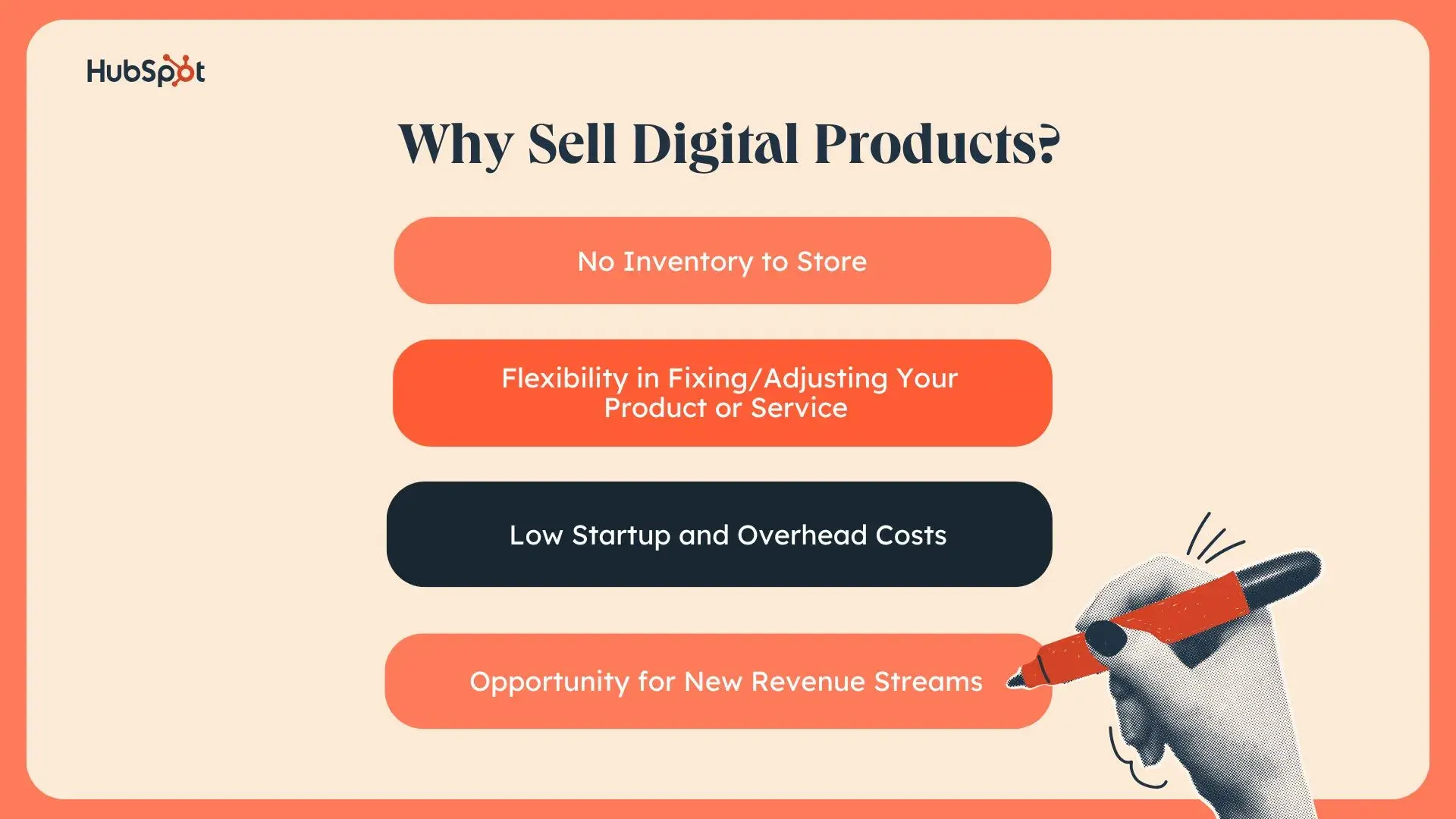
1. No Inventory to Store
I’ll cut to the chase: Inventory storage is one of the most expensive (and cumbersome) parts of running a product-based business. Between facility costs, risk mitigation costs, taxes, and the possibility of unsold stock piling up, I’ll just say that investing in a physical space for your products to live can and will quickly eat into your profits and create logistical headaches.
By selling digital products, you can lessen or eliminate the need to store goods, saving money on renting storage space. Additionally, without inventory to store, you can avoid the extra costs of buying packaging and mailing products.
This means:
- Fewer expenses
- Fewer unexpected nightmares
- More time to focus on growing your business instead of managing stock
2. Flexibility in Fixing/Adjusting Your Product or Service
The best part about having a digital product? Should a customer have an issue with a digital product, addressing their issue is likely going to be way easier than addressing any problems with a physical product.
When a physical product doesn’t meet a customer’s needs, it often results in returns, unexpected recalls, or redistribution costs. Alternatively, with digital products, updates and fixes can often be made instantly, from tweaking a design template to correcting a file, or improving an online course based on customer feedback. In short, when problems arise, they’re usually a quick fix.
Oh, and one more thing: because digital products are often delivered electronically, there’s no hassle of restocking, shipping replacements, or dealing with damaged goods.
3. Low Startup and Overhead Costs
Here’s another perk about selling digital products: they don’t come with the startup costs of selling physical products. These costs include storage, labor, and shipping. Oftentimes, you can start selling on e-commerce platforms for free, with upgrades available.
How? Well, since digital products don’t require manufacturing or inventory management, you won’t need to worry about bulk purchasing materials or dealing with supply chain issues. This means:
- You can test and refine your product without the financial risk that comes with traditional retail
- The cost to distribute your products is practically zero
- You can scale your business effortlessly since there’s no limit to how many times a digital product can be sold or delivered
Really, the only main investment here is your time; once you’ve created a high-quality product, you can automate sales and focus on marketing, freeing up extra moments in your day to refine your offerings or create new ones.
4. Opportunity for New Revenue Streams
If you happen to already run a business that sells physical products, selling digital versions is a relatively easy way to add another revenue stream.
Digital products can indeed complement physical products. Brands that already have a successful digital product can expand their digital products as their audiences grow. For example, HubSpot started as a CRM but has since expanded digital product offerings through templates, playbooks, and reports.
How to Sell Digital Products
If you’ve decided that selling digital products is for you, the next step is to figure out how to sell them effectively and reach your ideal audience. Here’s my step-by-step formula for how you’ll you’ll set up, market, and expand your digital product business successfully:
1. Put your thinking cap on, start brainstorming.
Before you do anything else for your digital product business, you’ll have to start at square one: deciding what kind of digital products you want to sell and determining what your core offerings will be. Regardless of how you might feel about putting pen to paper (or hands to keyboard?) about your ideas, it does lay important groundwork for later on; just trust me on this.
Once you’ve made your list of potential ideas, narrow it down to a lead product and a few other backups. Then, you can use market research (more on this below) to get some early validation to your product selections.
Pro Tip: Use HubSpot’s Startup Business Plan Template to make this easier on yourself! It’ll help you build out all the preliminary stuff, like product descriptions and pricing models.
2. Do some snooping around ... I mean market research.
Want to know the best way to get a second opinion without directly asking a single soul? Conduct some market research.
Market research doesn’t just help you determine what to sell, it also gives you well-informed insight into your target audience’s needs, preferences, and pain points, ensuring your product is something they actually want.
Now, I already know what you’re potentially thinking: Market research sounds like a daunting, expensive, time-consuming task. I don’t want to do that. Why would I want to do that?
Well, I’m not going to lie to you. If you’re looking at it from a bird’s eye perspective, it highkey feels like a huge hurdle to surpass.
However, let’s zoom in slightly. There are tons of free, pretty productive strategies to make it easier for you, such as:
- Using social listening tools (Sprout Social is awesome and offers a 30-day free trial)
- Reviewing social media commentary (I suggest looking up brand reviews across LinkedIn, TikTok, and Pinterest)
- Completing a robust competitor analysis
Au contraire to most opinions on starting a business, market research doesn’t have to be pricey or stressful. You just need to find what’s out there to make the work more efficient.
3. Understand who your ideal customer is, then make note of it.
Once you read this sentence, read it again: it is integral, non-negotiable, and absolutely necessary to to figure out who you’re marketing your digital products to. This happens through determining and gathering insights about your target audiences and buyer personas.
If this is something you find yourself struggling with as you do it, consult my tips below:
1. Use a buyer persona tool.
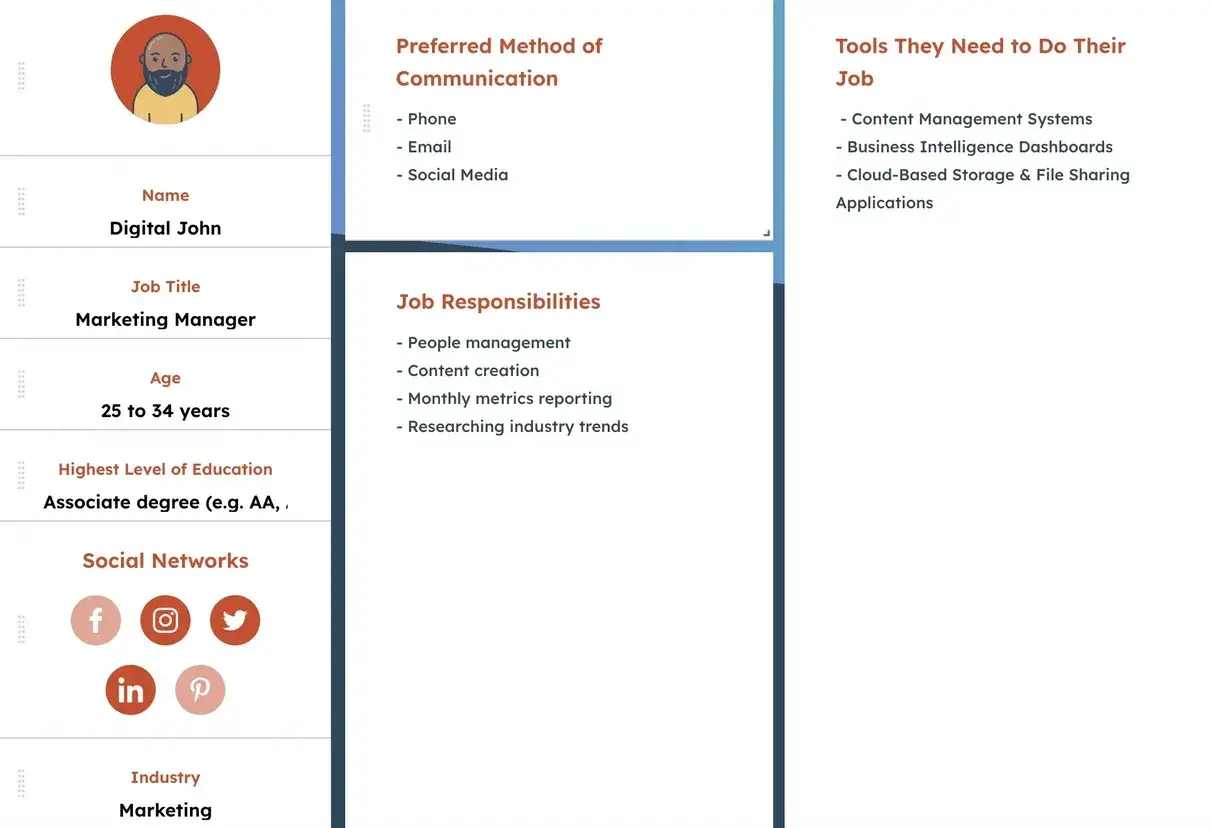
Create a buyer persona using HubSpot’s free Make My Persona tool
Why break a sweat when you can lean on smart automation and intuitive tools? HubSpot’s Make My Persona tool is great for putting together multiple buyer personas at once, I recommend using it for outlining and segmenting every type of customer that you anticipate interacting with your business.
2. Ask yourself every question.
When it comes to understanding your buyer personas, sometimes you’ve got to start with asking yourself about the things that would matter to them most. The clearer you are on who you’re selling to and what they’d want, the easier it becomes to not only build a business and brand that resonates but, ultimately, convert browsers into buyers.
Here are a few questions that can serve as a starting point:
- How many buyer personas and target audiences should I start with?
- What will identifying the target audience or buyer persona help me with?
- What specific problems or pain points does my digital product solve?
- Where does my ideal customer spend most of their time online?
BTW: Remember that Startup Business Plan Template I mentioned above? There’s also a section for creating your ideal buyer persona. Thank me later.
4. Create a well-developed marketing plan, don’t cut any corners (it won’t help).
As you build out elements of digital products business — like your website and branding — you’ll need to figure out how you want to get what you’re selling in front of other people’s eyes.
And before you go searching corners of the internet high and low, I have your answer: it starts with a damn good marketing plan. Here are the key pillars you need to consider when forming it:
- What channels of promotion you will utilize. Perhaps your website will be the core hub for everything related to your digital products, but maybe you decide that you need a newsletter to get the word out more regularly about product updates, restocks, etc. Figure out which channels work best for reaching your audience and you’ll be set for success.
- What marketing tools to add to your arsenal. From email marketing platforms like Mailchimp to SEO tools like Ahrefs, having the right tech stack can make promoting your products a whole lot easier.
- How to craft compelling messaging that sells. It’s not just about where you promote, it’s how you do it. Your brand voice, storytelling, and value proposition should always be woven seamlessly together.
- How to leverage customer engagement and feedback. Marketing isn’t a one-way street. Engaging with your audience through comments, emails, and even SMS lists can build trust and drive conversions. Encourage testimonials, showcase user success stories, and tweak your approach based on any feedback your receive.
Pro Tip: If you don’t want to deal with the hassle of figuring out all the above across multiple platforms, Hubspot’s Marketing Hub might be the solution you’ve been looking for. Via Marketing Hub, you can handle ad management, email marketing, and view conversion analytics.
5. Figure out what sales strategy works for you.
Once you’ve figured out your marketing plan, creating a sales plan is what’s next. Here’s what a good sales plan should include:
- Your target audience and customer journey. Understanding who your buyers are and what steps they take before purchasing will help you tailor your sales strategy to be the best it can be.
- Pricing and promotional strategies. Decide how you’ll price your digital products and if you’ll offer discounts, bundles, or limited-time deals; then evaluate how these strategies will drive more sales.
- Sales funnels and automation. Identify the steps potential customers go through from discovery to purchase and incorporate automation tools (like email sequences or chatbots) to nurture leads without constant manual effort.
With a good sales plan, you’ll turn all the marketing-driven attention into actual revenue. As your business expands, your sales plan will only get better and better.
Pro Tip: Utilizing HubSpot’s Sales Hub will make monitoring your customers’ buyer’s journey a whole lot simpler. With features like email tracking and Gmail/Outlook integration, keeping an eye on sales interactions and customer engagement is made easy.
6. Decide where you’ll sell your digital products; choose more than one platform if you please.
After you’ve done the research to figure out who you’re selling to, establish a marketing plan, and put together a sales strategy, all of your hard work can manifest in one central place: your online store.
Now, for most new entrepreneurs or physical business owners beginning to dabble in selling digital products, the easiest place to start might be Shopify or Etsy. Many of these marketplaces already have an audience since people visit these platforms to search for products, so it’s easy to get started on either site. However, you can always design your own custom storefront if that’s a challenge you’re willing to take on.
If custom-designing a landing page or storefront sounds like something that is up your alley, I’ll share some more in-depth recommendations on websites that’ll allow you to do just that in the following section.
7. Set-up your online storefront.
As I mentioned above, you have two options for designing your online storefront: 1) you use pre-made templates or 2) you build your own website. Either of these options are fine, but being the totally honest gal’ that I am, I’ll be fully transparent. One does require significantly more effort and commitment than the other.
If you’re in search of a platform that’ll make structuring your storefront easy, fast, and unified, I recommend HubSpot’s Content Hub. With easy-to-customize templates (for page formats like landing pages, homepages, purchasing pages, or blog posts), you can build a fully operational website from scratch, with zero coding knowledge.
In a later section, I’ll also introduce a few other beginner-friendly selling platforms that feature storefront customization options.
8. Launch your online store.
At this stage, all the minute details should be ironed out, and you should be good to go to officially start selling digital products. Your product is ready, your marketing and sales strategies are in place, and your online storefront is set up to welcome customers.
From here, it’s all about execution. Here are a few final tips I’ll leave you with to ensure that launching your digital products business goes smoothly:
- Track your progress. Do this via an informal goal list, a well-organized spreadsheet, whatever works for you.
- Keep an eye on customer feedback. Be sure there’s a spot on your site for customers to leave reviews and/or ratings for your products.
- Optimize your promotional efforts. Upload a few free offerings for folks to try out your products, you never know how this could positively impact their buyer’s journey.
- Tweak your sales strategy as you grow. Embrace change, trust analytics (‘cause numbers never lie), and don’t be afraid to pivot if needed.
Where to Sell Digital Products
You’ve got your digital product ready to go; now the big question is, where do you actually sell it?
With so many platforms out there, choosing the right one can feel intense, but don’t worry too much, my dear reader. I’ve got you covered. Whether you want to sell directly from your own website or tap into a built-in audience on a marketplace, here’s a breakdown of the best places to sell your digital products (and how to pick the one that fits your business best):
1. Buy Me a Coffee

Buy Me a Coffee is a creator-friendly platform designed to help artists, writers, and entrepreneurs monetize their work through donations, memberships, and digital product sales.
It’s an excellent option for those who want a simple, low-friction way to earn money from their audience without setting up a full-fledged e-commerce store. Buy Me a Coffee also makes transactions easy with one-time payments or recurring memberships, allowing supporters to fund your work without a crazy commitment.
What I like about Buy Me a Coffee:
- Business owners can get paid immediately after making a sale
- Customers can choose a price that’s affordable for them based on a business owner’s set price threshold
- Customers can support their favorite businesses through a one-time donation (aka “buying” a coffee)
2. Gumroad

Gumroad is one of the most popular platforms for selling digital and physical products with ease, catering to creators, educators, and entrepreneurs alike. It allows you to sell everything from e-books and courses to music and software, all while providing built-in tools for handling payments, subscriptions, and even affiliate marketing.
What I like about Gumroad:
- Any type of business owner in any stage of growing their business can sell digital products on Gumroad
- Wide variety of product categories (ex: film, marketing, fine art, etc.)
- Business owners can use a Gumroad’s site builder to build a storefront or embed their own websites
3. Etsy
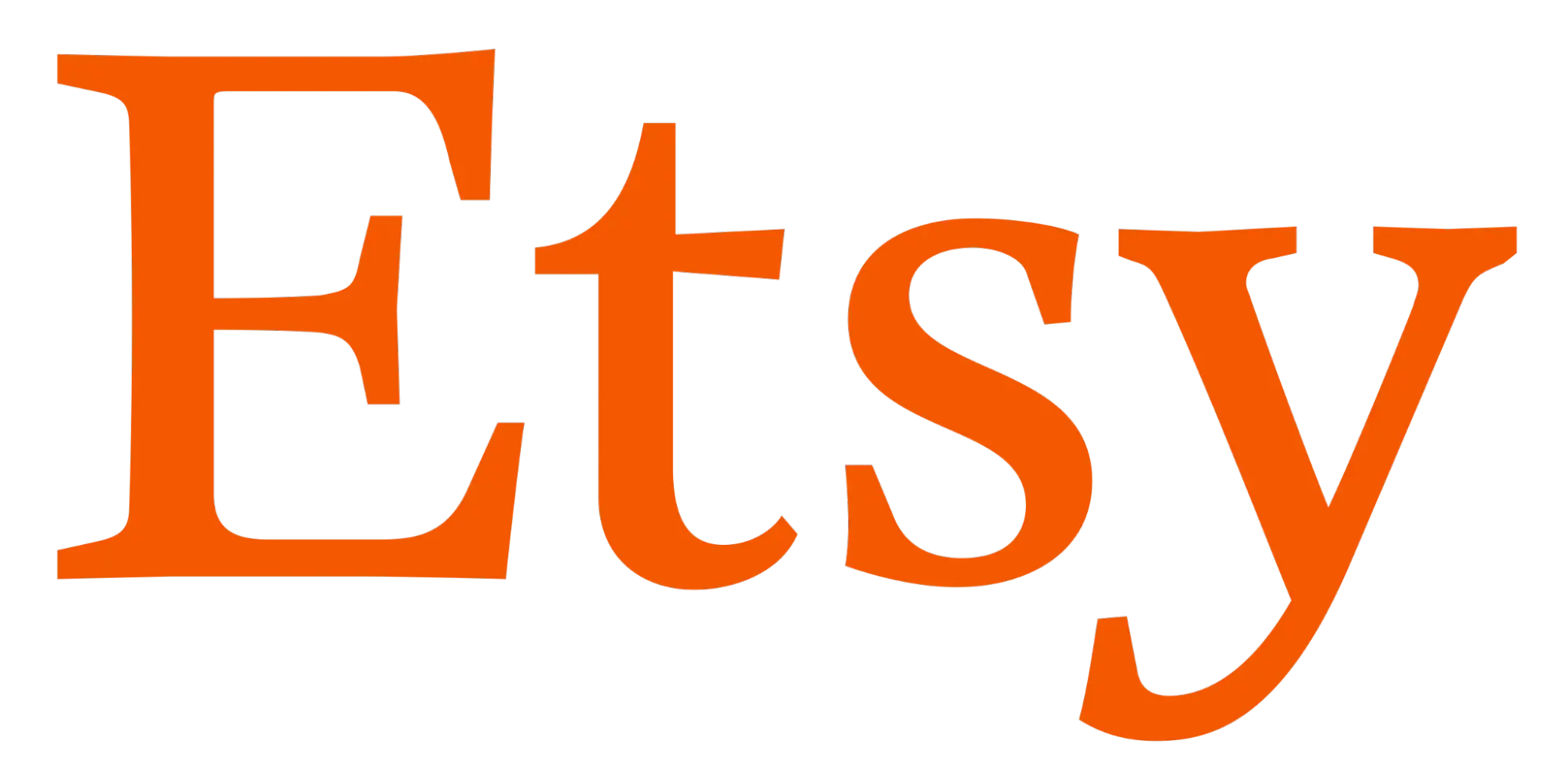
Etsy is widely known for handmade goods, but it’s also an excellent platform for selling digital downloads like templates, printables, digital art, and planners.
With its huge built-in audience, Etsy can help you reach potential customers without the need for aggressive, expensive marketing efforts. While the platform does charge a penny for listing and transaction fees, its marketplace model makes it a strong option for creators looking to sell digital products in a familiar e-commerce environment.
What I like about Etsy:
- Easy mobile navigation
- Allows for business owners to organize their products based on type (ex: business owners can separate bundled items from larger kits)
- Allows for business owners to categorize products as “digital downloads”; this is immediately visible to customers
4. Shopify

Shopify is an e-commerce platform that gives business owners full autonomy over their online store, branding, and sales strategy. Shopify allows folks to build a custom storefront and sell digital and physical products directly to customers.
With features like automated digital delivery, integrations with marketing tools, and detailed analytics, Shopify is ideal for those looking to scale a digital product business and create a branded shopping experience.
What I like about Shopify:
- Simple checkout interface
- Easy cross-channel publishing (Shopify seamlessly connects to Pinterest, Ebay, and Instagram)
- Centralized product and business management system through Shopify Admin
5. Marketsy.ai

Marketsy.ai is a newer, AI-driven marketplace designed specifically for selling digital products and creative assets. It leverages artificial intelligence to help creators optimize pricing, improve product discoverability, and streamline sales processes.
If you’re looking for an innovative platform that prioritizes automation and smart marketing, Marketsy.ai can be a great choice to enhance your digital product sales with minimal manual effort.
What I like about Marketsy.ai:
- Offers an in-platform product description advisor (to enhance product visibility and optimize sales)
- First month’s subscription fee is $1 (then $15/month afterwards)
- Accepts customer payments through Stripe and Paypal (two of the easiest platforms for payment management)
8 Best Digital Products to Sell
1. Social Media Templates
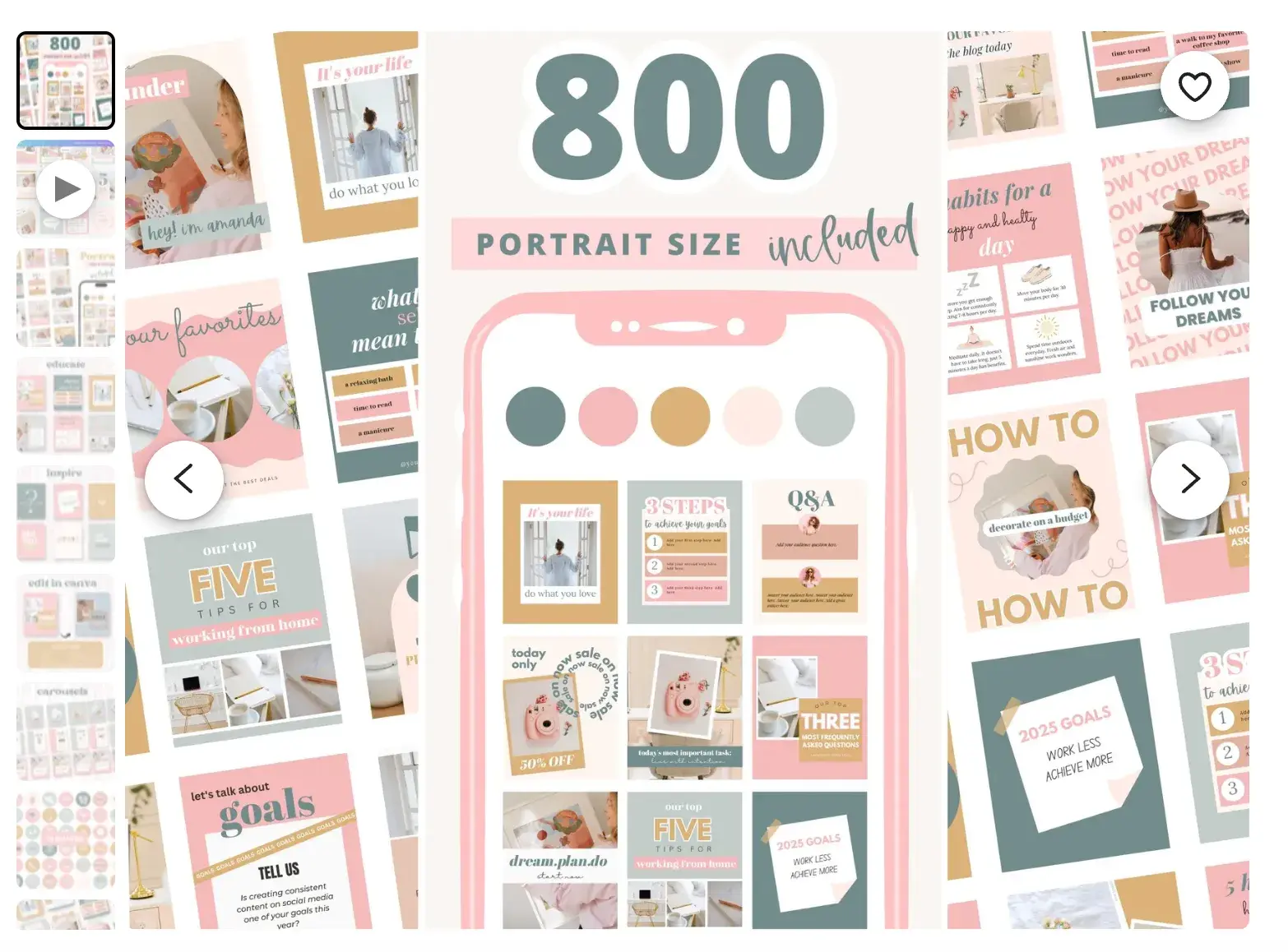
Canva-compatible social media templates are an excellent digital product to sell because they cater to all different kinds of businesses, influencer types, and content creators who need aesthetic and functional designs without starting from scratch.
No matter if you’re pushing out story templates, carousel post designs, or layout design documents, a well-designed Canva file will always be in high demand; since Canva is widely used, these templates have a broad potential audience.
2. Logo Designs
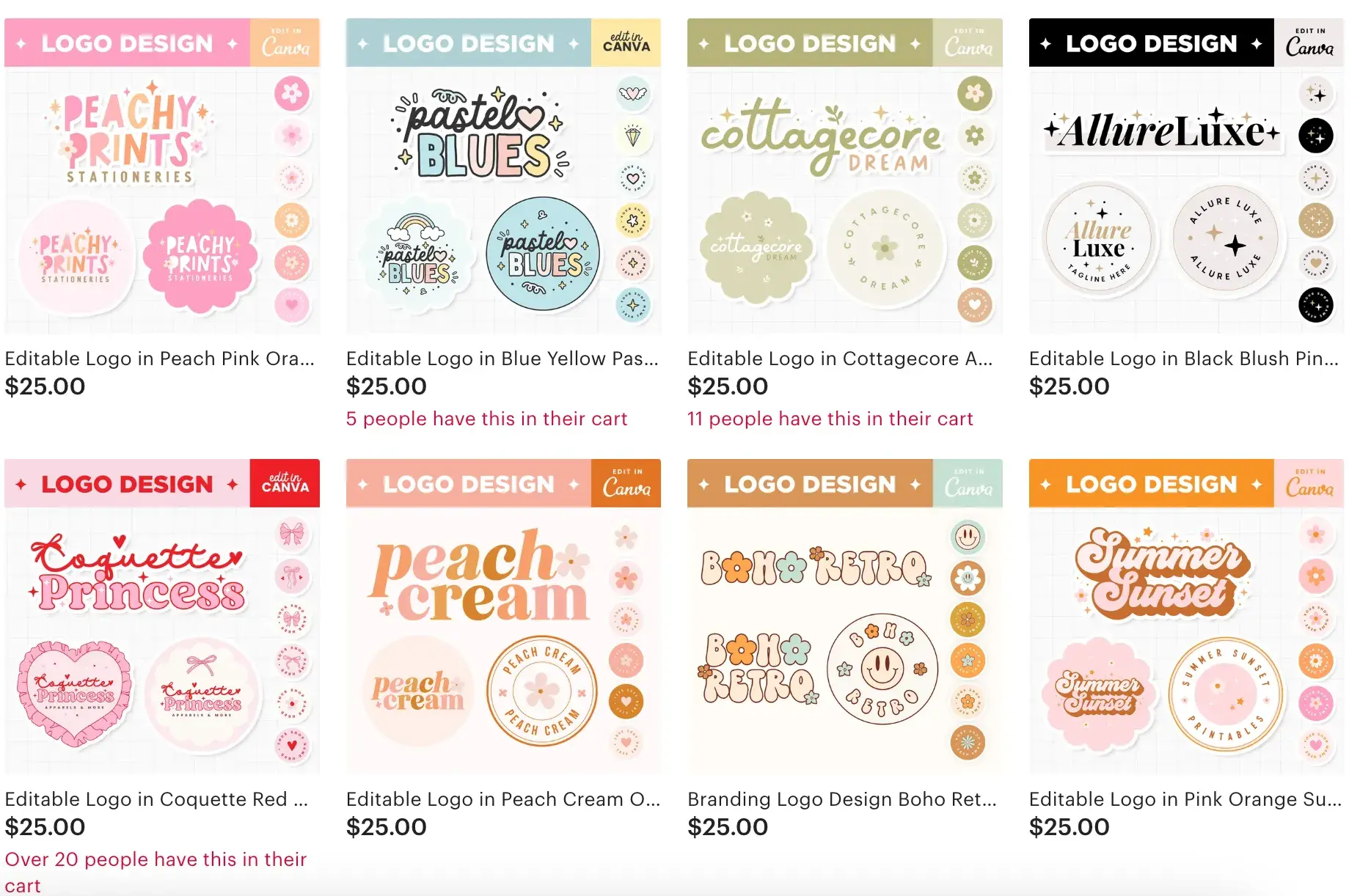
Other entrepreneurs, startups, and small businesses are always on the lookout for professional yet affordable logo designs. Selling pre-made or customizable logo kits allows you to cater to this demand.
You can offer fully editable logos in vector or PNG formats and even include brand kits with matching color palettes, fonts, and various social media assets.
3. Size Charts
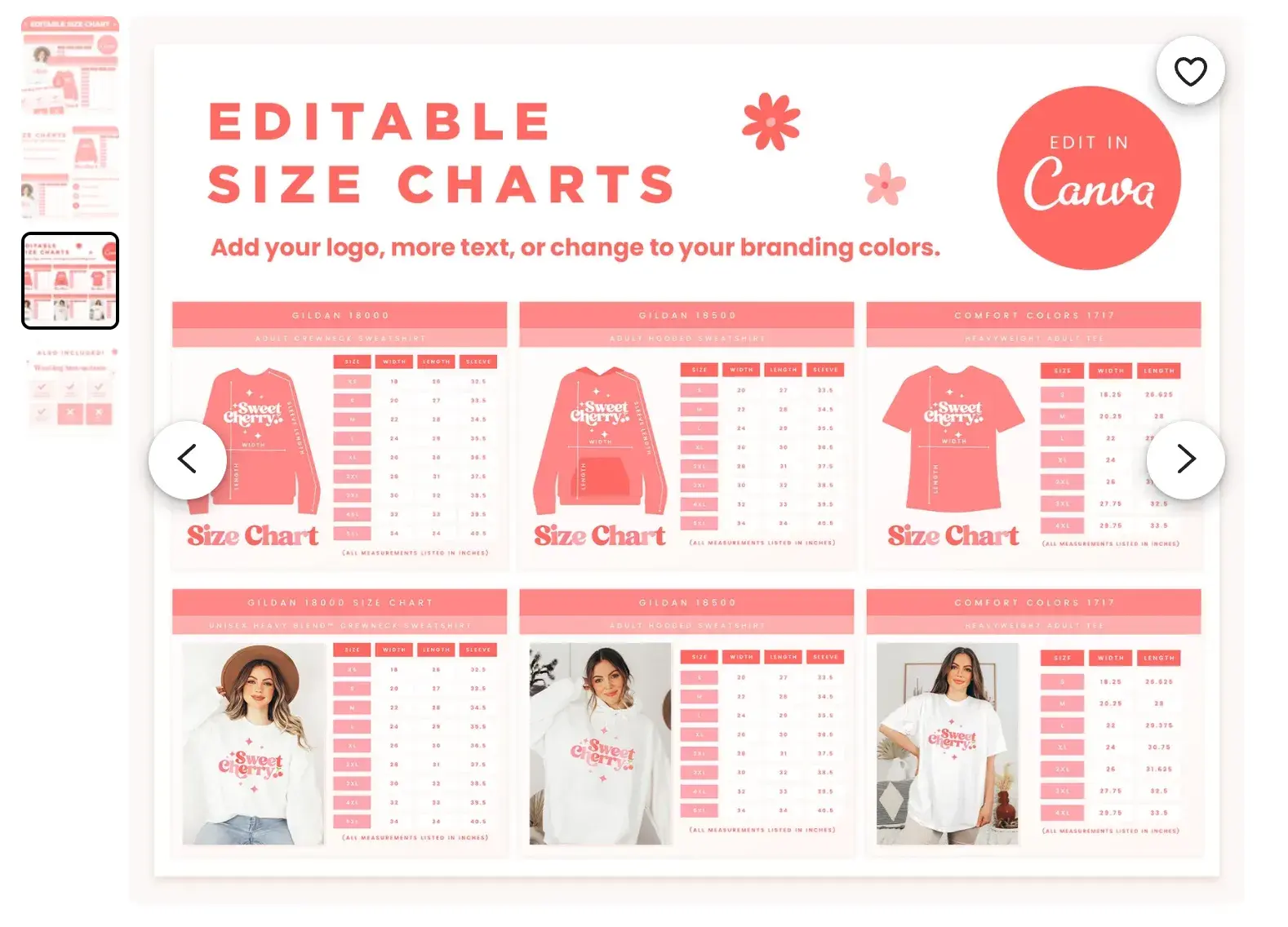
Believe me or not, size charts are a surprisingly in-demand digital product, especially for small e-commerce businesses in fashion, footwear, and accessories.
Many independent businesses struggle to create their own well-formatted, easy-to-read sizing guides, so this a valuable resource to offer. You can create size charts for different industries (i.e., clothing, jewelry, pet accessories) as well as countries, then sell them as editable templates.
4. Budget Spreadsheets

Believe me or not, size charts are a surprisingly in-demand digital product, especially for small e-commerce businesses in fashion, footwear, and accessories.
Many independent businesses struggle to create their own well-formatted, easy-to-read sizing guides, so this a valuable resource to offer. You can create size charts for different industries (i.e., clothing, jewelry, pet accessories) as well as countries, then sell them as editable templates.
5. Instagram Story Highlight Designs

Image Source
Managing finances can be overwhelming for a whole lot of people, but digital budget spreadsheets offer a simple, plug-and-play solution. By offering this ready-made financial tool, you can help potential customers stay organized, track expenses, and reach their money goals with ease.
With this type of digital product, there’s also a bit of wiggle room what you design, too. Personal finance trackers, business expense sheets, and savings goal planners are all super practical, highly sellable digital products. Google Sheets and Excel-compatible versions make them even more accessible.
6. Notion Planner Templates
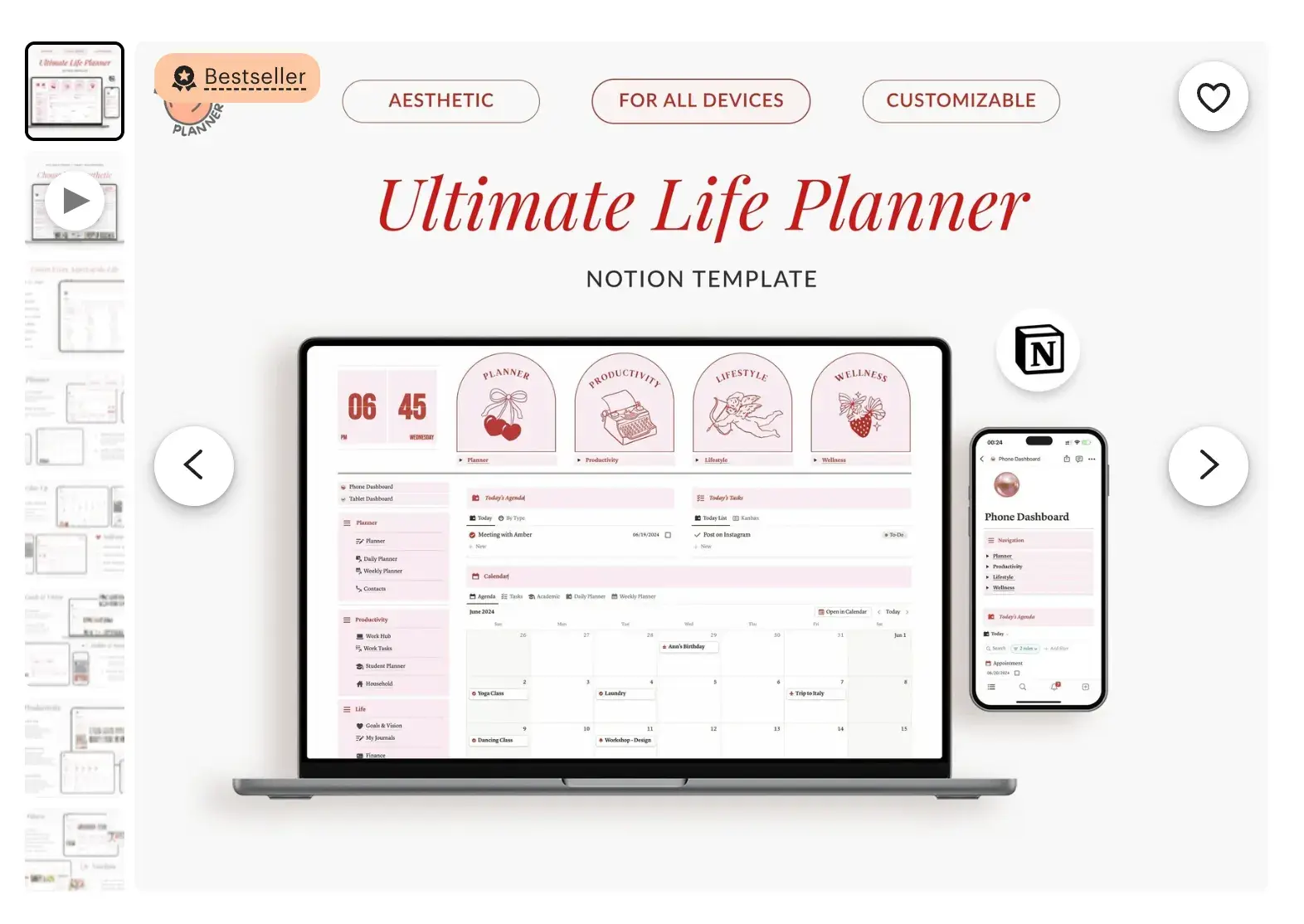
In the last two to three years alone, Notion has totally skyrocketed in popularity, and users love pre-made templates that help them stay organized.
You can create Notion planner templates for different needs, such as goal setting, habit tracking, business planning, student organization, or basic daily to-do lists. Notion templates can also be duplicated with a single click, so they’re incredibly easy to distribute and sell.
7. Lightroom Presets
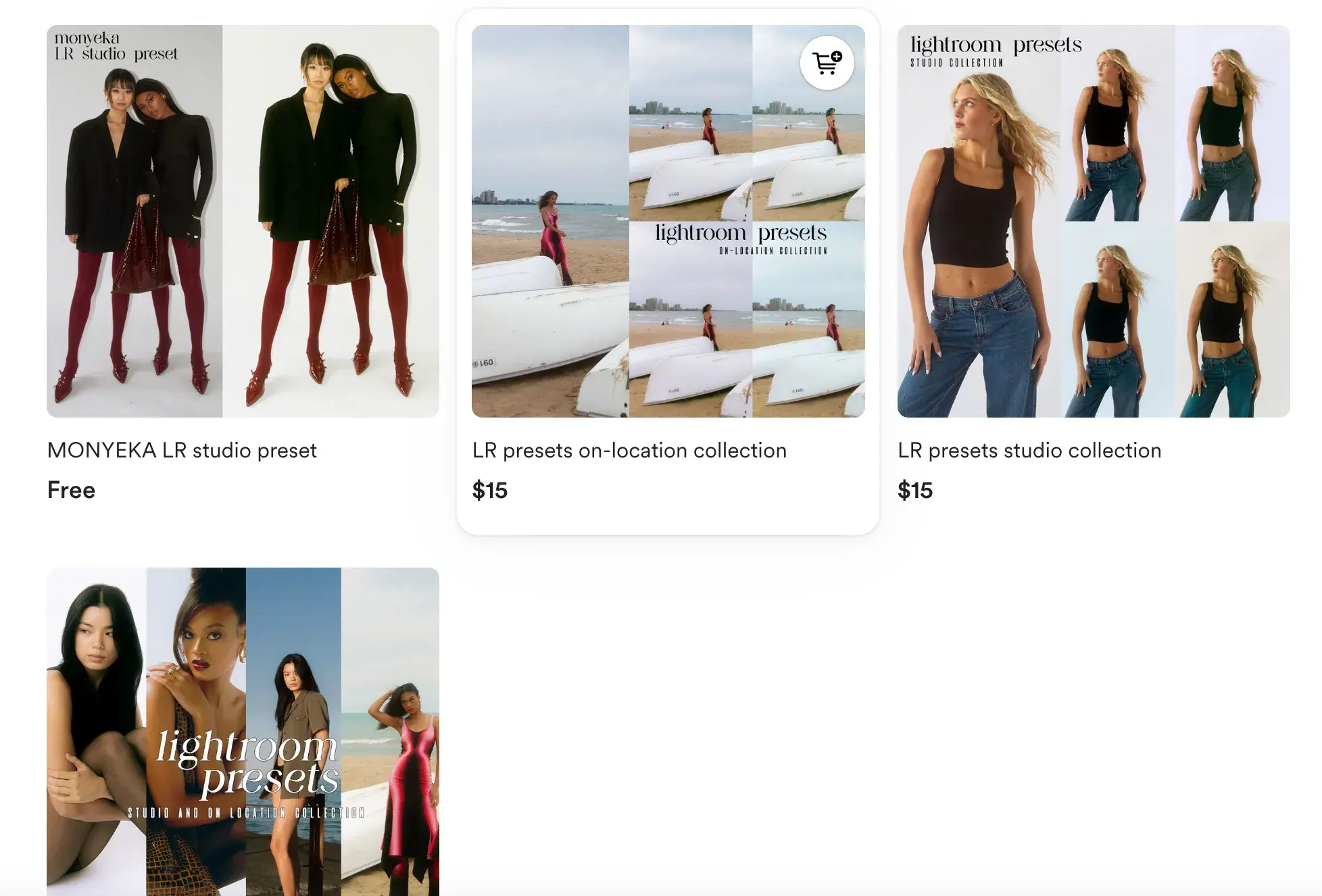
Adobe Lightroom presets are a top-selling digital product for photographers who want a consistent editing style without spending hours adjusting settings.
You can sell individual presets or bundles for different aesthetics, such as vintage, film-style, bright and airy, moody, or cinematic. These presets are especially popular among Instagram users, too.
8. Customizable Digital Notebooks
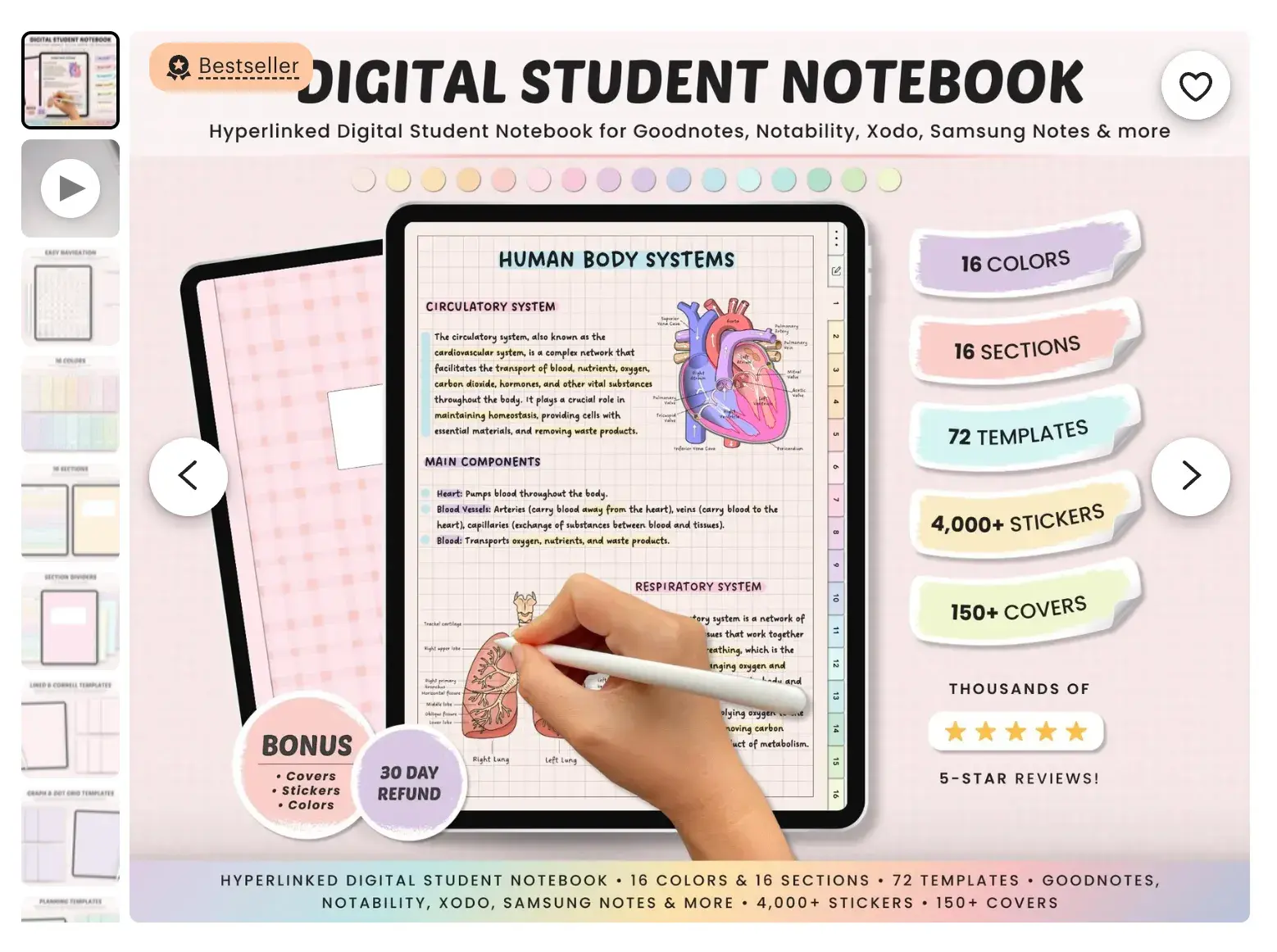
Digital notebooks are great for students, professionals, and planners who prefer an organized, paperless workflow.
Designed for use on apps like GoodNotes, Notability, or OneNote, these notebooks often come with hyperlinked tabs, customizable pages, and themed layouts (such as bullet journaling, academic notes, or business planning). Digital notebooks can can be used across multiple devices (like iPads), so they appeal to a wide audience.
Wrapping It All Up: Your Guide to Selling Digital Products Successfully
In short, selling digital products isn’t just a trendy way to make money. It’s a low-maintenance and wildly profitable business model when done right. And if you take anything away about digital product selling from this post, I hope it’s the following:
- Planning your business is everything
- Starting small doesn’t mean things will be that way forever
- Entrepreneurship is accessible, even if your ideas aren’t grandiose
Of course, success won’t happen overnight. Like any other business, selling digital products will take strategy, consistency, and a bit of trial and error. But once you find the right tools, platforms, and an audience that values what you offer, you’ll be well on your way to long-term wins.
And hey, if you’re waiting for the “perfect” time to start, I’ve got a spoiler alert: it doesn’t exist. Just take the leap. You’ll never know how one idea could change your life unless you give it a shot and see where it takes you.
Editor's note: This post was originally published in March 2023 and has been updated for comprehensiveness.
Entrepreneurship

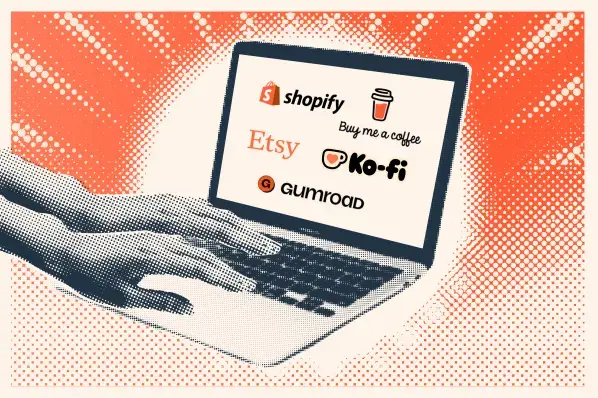

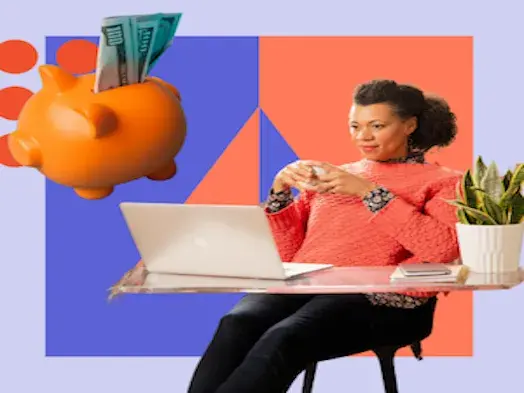
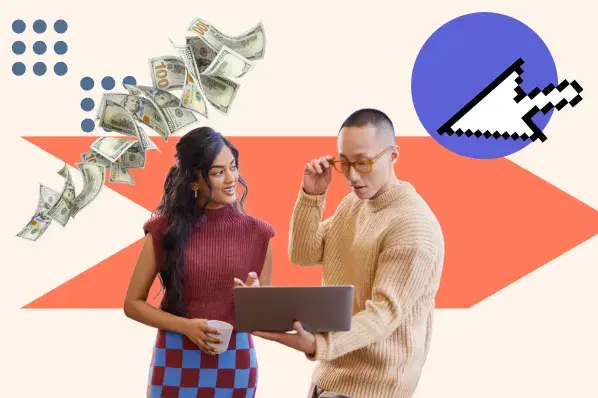
![Inside Holding Companies — The Entities That Own Popular Businesses [+ Expert Tips]](https://53.fs1.hubspotusercontent-na1.net/hubfs/53/holding-companies-1-20250502-5640825.webp)
![Grants for Black women and women of color [+ 2025 deadlines]](https://53.fs1.hubspotusercontent-na1.net/hubfs/53/grants-for-black-women-1-20250328-4679344-1.webp)

![Everything You Need to Know about Partnership Businesses [+ Expert Tips]](https://53.fs1.hubspotusercontent-na1.net/hubfs/53/partnership-business-1-20250219-4868724.webp)

![Entrepreneurial Marketing: Find New Customers on a Shoestring Budget [+Expert Tips]](https://53.fs1.hubspotusercontent-na1.net/hubfs/53/entrepreneurial-marketing-1-20250220-651487.webp)
![Entrepreneurship Trends That Will Change the Business of Building Businesses in 2025 [Expert & Data-Backed Predictions]](https://53.fs1.hubspotusercontent-na1.net/hubfs/53/entrepreneurship-trends-1-20250219-7312699.webp)
